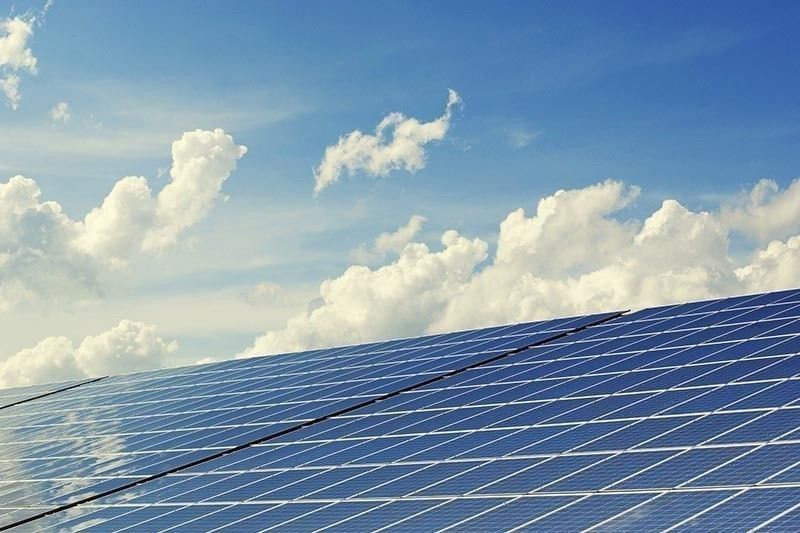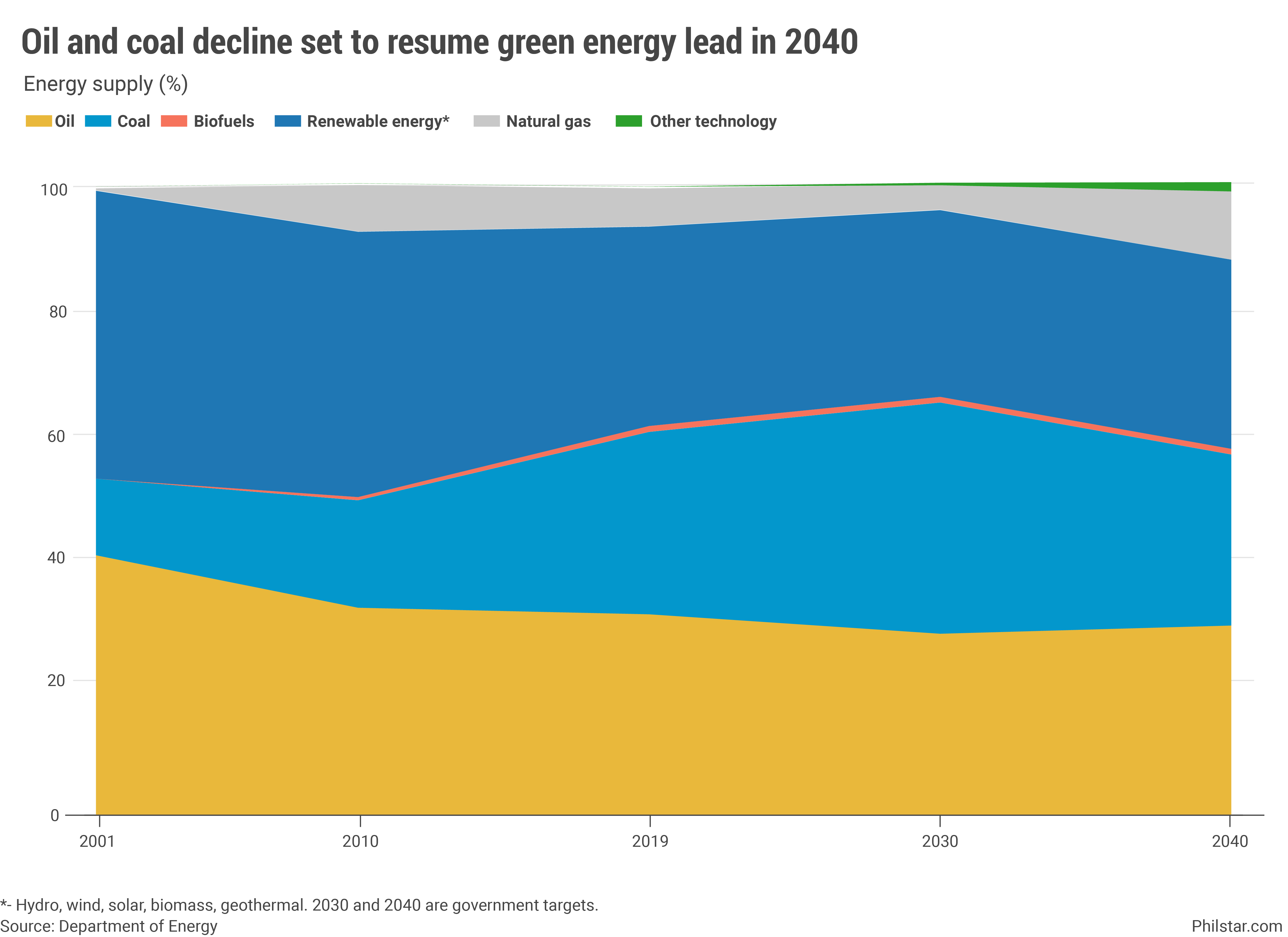Green energy seen at brink of return as top power source in 2040

MANILA, Philippines — The Philippines will see a gradual return of renewable energy as top power source beyond 2040, counting on the shift to bridge a widening energy gap while doing the country’s part to mitigate climate change.
Green energy’s rise would be a consequence of a drop in oil and coal use over the next 2 decades and massive future investments in renewables, according to the latest Philippine Energy Plan 2018-2040 released by the energy department.
“Our country is a victim of climate change…This has left a country like ours at a delicate crossroads of balancing the need to fulfill our energy requirements without sacrificing the future of coming generations,” Energy Secretary Alfonso Cusi said in a recent statement.
By 2040, renewables are seen accounting for 30.2% of primary energy mix, which summarizes all power sources both produced domestically and imported. By that time, oil’s share will only be a tad higher to 30.3%, while that of coal would drastically slide to 27.3%.
An RE-led economy however would only mark a return years prior to 2017 when green energy sources were providing up to 45% of the Philippines’ power. That all changed after a number of coal powerplants approved years back went online while oil imports rose. In 2019, the combined share of oil and coal rose to 61.2% of power while that of RE has dropped to 31.81%.

The road back to a green energy-driven archipelago however would require many things. For one, energy forecasts showed 10% of transportation would need to convert to electric, while bioethanol and biodiesel use would have to take over cheaper diesel and gasoline use by rising 5.4% and 4.6% every year, respectively.
This is important since transportation accounted for the largest chunk of energy consumption at 38.4% as of 2018, the latest period on which data is available. A decline in oil use, in turn, would also lower oil imports, improving the country’s energy sufficiency to 61.4% by 2040 from last year’s 51.4%.
“Coal and oil shares will continue to decrease due to the use of alternative fuels for transport, among others,” Cusi said in a forum this week.
“This also translates to a power generation mix that shifts from being coal-centered to one where RE, natural gas, and other emerging clean energy technologies will have increased shares,” he added.
In addition, new RE investments should materialize. By government estimates, renewables capacity from existing and future plants should surge to 33,000 megawatts by 2040 from just 5,713.3 MW as of September. By segments, geothermal energy is likely to take the largest pie, benefiting from last month’s relaxation in foreign ownership for large-scale geothermal plants worth at least $50 million.
Sara Jane Ahmed, energy finance analyst at the Institute for Energy Economics and Financial Analysis, a think tank, said an 80-90% drop in green energy costs over the past decade would be a boon to RE investments, but she cautioned more green power would not necessarily translate to lower electricity costs for consumers.
“Resolving high power costs needs regulatory improvements to take advantage of deflationary RE. It is now up to the Energy Regulatory Commission to take additional steps to reinforce the Department of Energy’s new policy direction,” Ahmed said in an e-mail.
To start with, she said “removing the pass-through for fuel costs should be a high priority along with the implementation of curtailment clauses.” — Prinz Magtulis
- Latest
- Trending



























